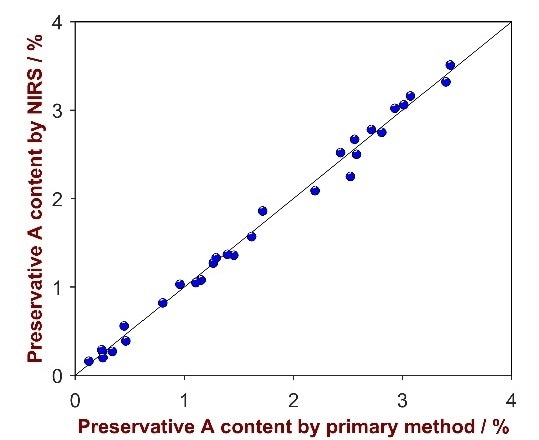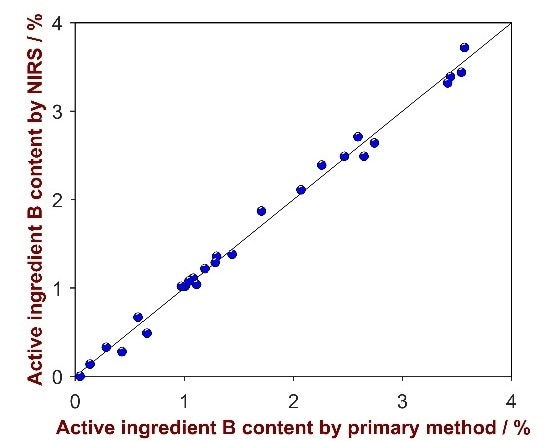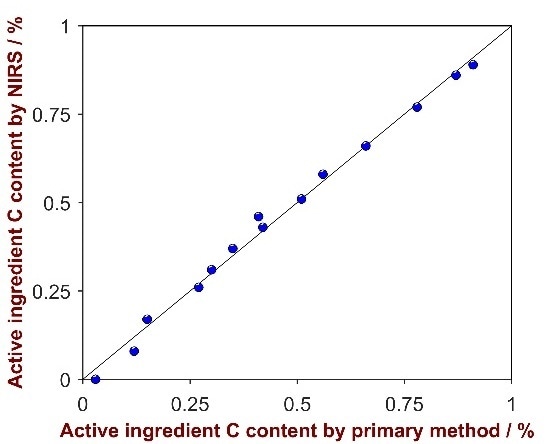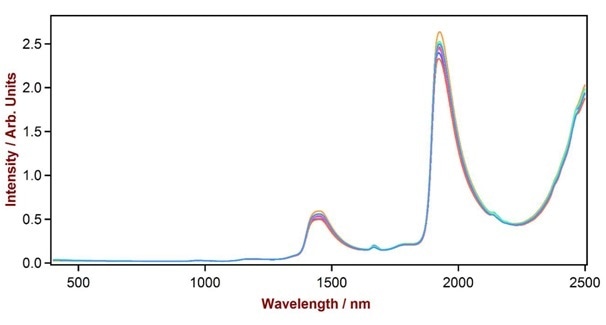Shampoos are haircare products used for cleaning as well as for refining the feel and look of hair. They are complex multi-constituent mixtures composed of preservatives, detergents, and active substances, such as anti-dandruff actives. HPLC is generally the preferred method for the quantification of the ingredients in shampoo but is time-intensive, requires chemicals and produces wastes. Also, it is necessary to replace expensive chromatography columns when separation criteria are not satisfied anymore and/or when there is a significant difference between retention times and reference values.
On the other hand, near-infrared spectroscopy (NIRS) is an alternative approach that is free from these drawbacks. This article demonstrates that NIRS is an ideally suited method to conduct nondestructive quantitative multi-constituent analyses of shampoo hair care products within seconds but without the need for additional chemicals like standards or solvents.
Experimental
This feasibility study analyzed shampoo samples for their content of one preservative A and two active ingredients B and C. 48 samples were prepared in total with differing concentrations of A, B, and C, using raw materials and crude shampoo. A Metrohm NIRS XDS RapidLiquid Analyzer equipped with NIRS Quartz Cuvette Open Top 0.5 mm and the associated NIRS Spacer for Quartz Cuvette 0.5 mm was used to collect the spectra. The Vision Air 2.0 Complete software package was used to perform data acquisition and quantification method development (Table 1 and Figure 1).
Table 1. Used equipment for this shampoo application
| Equipment |
Metrohm order code |
| NIRS XDS RapidLiquid Analyzer |
2.921.1410 |
| NIRS Quartz Cuvette Open Top 0.5 mm |
6.7401.110 |
| NIRS Spacer for Quartz Cuvette 0.5 mm |
6.7403.110 |
| Vision Air 2.0 Complete |
6.6072.208 |

Figure 1. The Metrohm NIRS XDS RapidLiquid Analyzer with used cuvettes and cuvette spacer.
Various spectral regions were considered based on the analyte. The 2nd derivative was used as data pre-treatment to perform a partial least squares regression (PLS).
Preservative A
Four factors were applied to quantify the preservative A in shampoo, yielding a standard error of calibration (SEC) of 0.111% over the typical range of 0-4% (Figure 2).

Figure 2. Correlation plot of the predicted values by NIRS versus the laboratory values of the preservative A.
Active Ingredient B
The quantitative analysis of the active ingredient B was performed using 4 factors, resulting in an SEC of 0.147% over the range of 0-4% (Figure 3).

Figure 3. Correlation plot of the predicted values by NIRS versus the laboratory values of the active ingredient B.
Active Ingredient C
The active ingredient C was quantified using 2 factors, yielding an SEC of 0.026% over the typical range of 0-1%. Figure 4 shows the correlation plot.

Figure 4. Correlation plot of the predicted values by NIRS versus the laboratory values of the active ingredient C.
Results

The feasibility study results discussed in this article demonstrate the ability of the Vis-NIR spectroscopy to determine different ingredients in shampoos such as a preservative and two active ingredients simultaneously within a minute. Since the calculated standard errors are minor, NIRS is a brilliant analysis method for identifying out-of-specification batches. Compared to primary methods, NIRS is an economical method as it can determine different ingredients simultaneously, has short measurement times, and does not require further chemicals for analysis.
About Metrohm
At Metrohm is one of the world’s most trusted manufacturers of high-precision instruments for chemical analysis. Metrohm was founded in 1943 by engineer Bertold Suhner in Herisau, Switzerland. Today, Metrohm is represented in 120 countries by subsidiaries and exclusive distributors. The global Metrohm Group also includes the Dutch companies Metrohm Applikon and Metrohm Autolab, manufacturers of online analyzers and instruments for electrochemical research, respectively. Recently, the Metrohm Group was joined by Metrohm Raman, a leading manufacturer of handheld Raman spectrometers.
Metrohm is the global market leader in analytical instruments for titration. Instruments for ion chromatography, voltammetry, conductivity, and stability measurement make the Metrohm portfolio for ion analysis complete. Instruments for Near-infrared and Raman spectroscopy are another, strongly growing segment of the Metrohm portfolio.
Metrohm is a problem solver, both in the laboratory and within the industrial process. To this end, the company offers their customers complete solutions, including dedicated analytical instrumentation as well as comprehensive application know-how. More than 30% of the company’s employees at the Metrohm international headquarters in Herisau work in R&D.
Metrohm has been owned 100% by the non-profit Metrohm Foundation since 1982. The Metrohm Foundation, which does not exert any influence on the company’s business operations, sponsors gifted students in the natural sciences, supports charitable and philanthropic purposes and, above all, ensures the independence of the company.
Sponsored Content Policy: News-Medical.net publishes articles and related content that may be derived from sources where we have existing commercial relationships, provided such content adds value to the core editorial ethos of News-Medical.Net which is to educate and inform site visitors interested in medical research, science, medical devices and treatments.